Nvidia and TSMC to unveil first domestic wafer for Blackwell chips, Axios reports
- Treasury rates fell sharply as interest rate volatility dropped
- High-yield bonds rose big last month, but uncertainty lies ahead
- Traders monitoring important technical pattern on U.S. 10-year yield chart
The dust has settled. Treasury rates are significantly lower after the FOMC meeting last week, as Chair Jerome Powell gave traders a confidence boost that the rate hike cycle would not be too harsh. In fact, market participants now see the Fed’s policy rate topping out just shy of 3.25% versus about 3.4% before last Wednesday’s decision.
Fed Hikes Seen As Less Intense
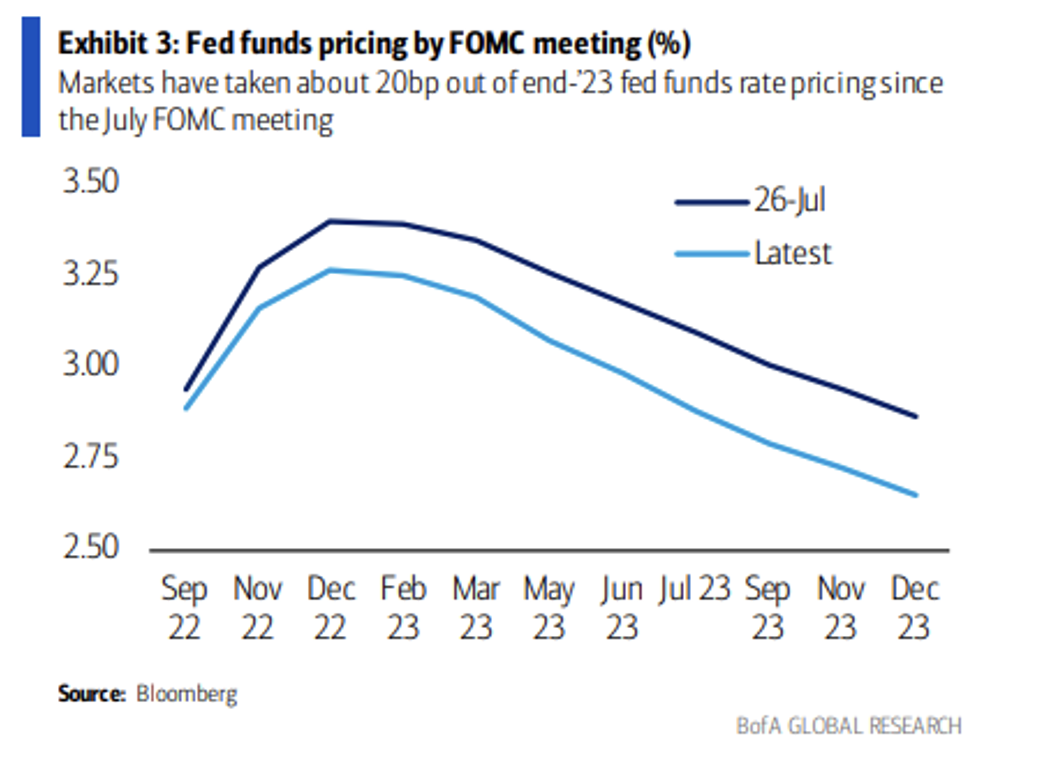
Source: BofA Global Research
The 0.75-percentage-point hike in the interest rate was met with a buying frenzy across most markets. For fixed-income investors, a late-week drop in yields capped off the best month for the global bond market since 2020, according to Bloomberg.
A Stellar Month For Global Stocks, Bonds
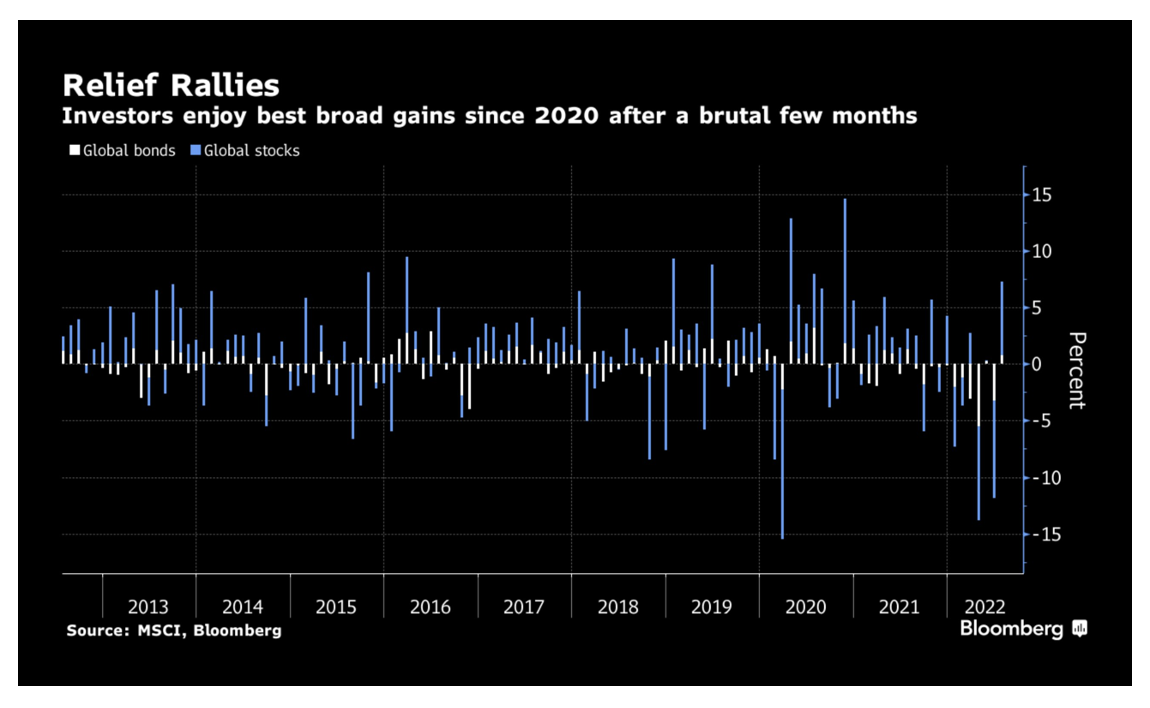
Source: Bloomberg
In the domestic Treasury market, the curve remains extremely inverted as the 2-year note yields 2.88%, while the 10-year note plunged to 2.65%. That 23-basis-point difference marks the widest inversion since August 2020. Still, the Fed is said to look more closely at the 3-month to 10-year curve relationship for better clues on the possibility of a deep recession. Right now, that spread is about 0.3% and will likely tighten as the Fed continues its rate hike progression.
Treasury Curve Inversion

Source: St. Louis Federal Reserve
Big moves were not seen just among U.S. and international Treasury markets. The speculative end of fixed income had its best month since late 2011, as measured by the iShares iBoxx High Yield Corporate Bond ETF (NYSE:HYG). Junk bonds saw a much-needed relief rally after a stunning drop during the first half of 2022. The speculative-grade niche of the bond market remains slightly under where it settled in May, however.
High Yield Bond ETF Rose In July
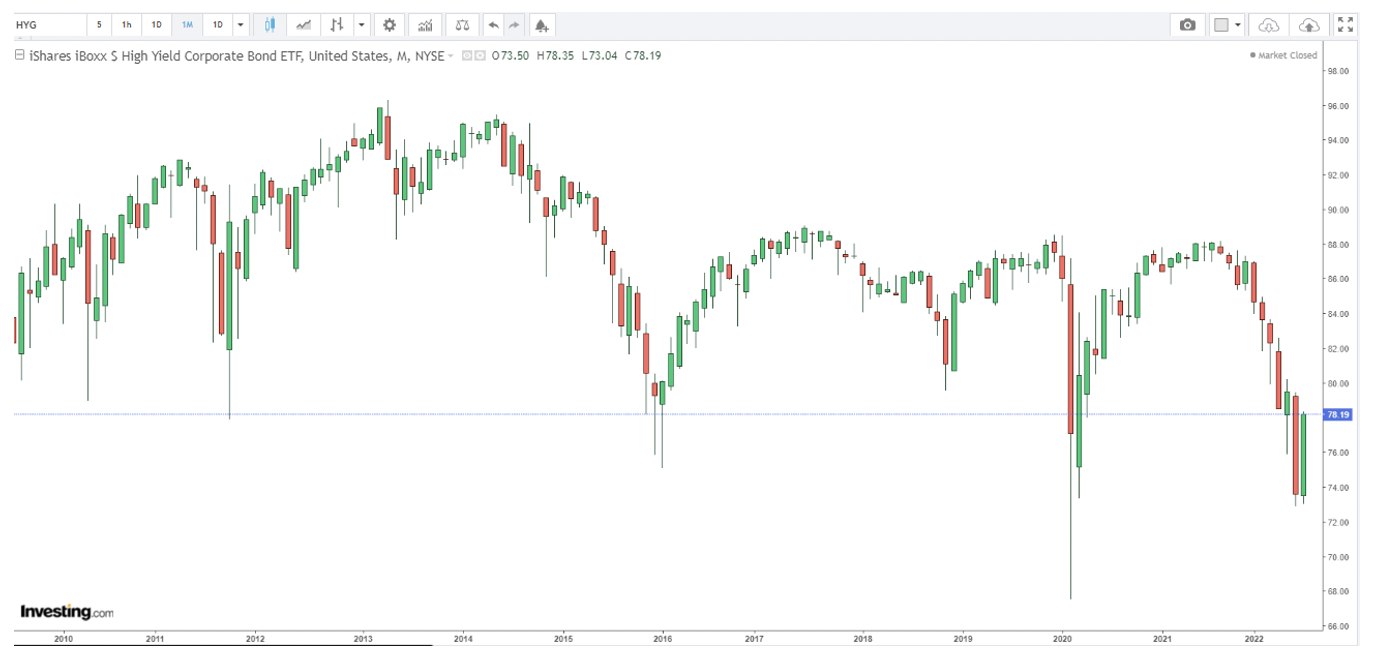
Source: Investing.com
The yield on speculative-grade corporate debt remains elevated at 7.5%. That could have bearish impacts on risky firms that depend on that type of financing. The good news is that relatively few companies appear to require fresh financing in the next two-plus years. According to Goldman Sachs Investment Research, the high-yield bond maturity wall does not hit the market until 2025.
HY Bond Maturity Wall
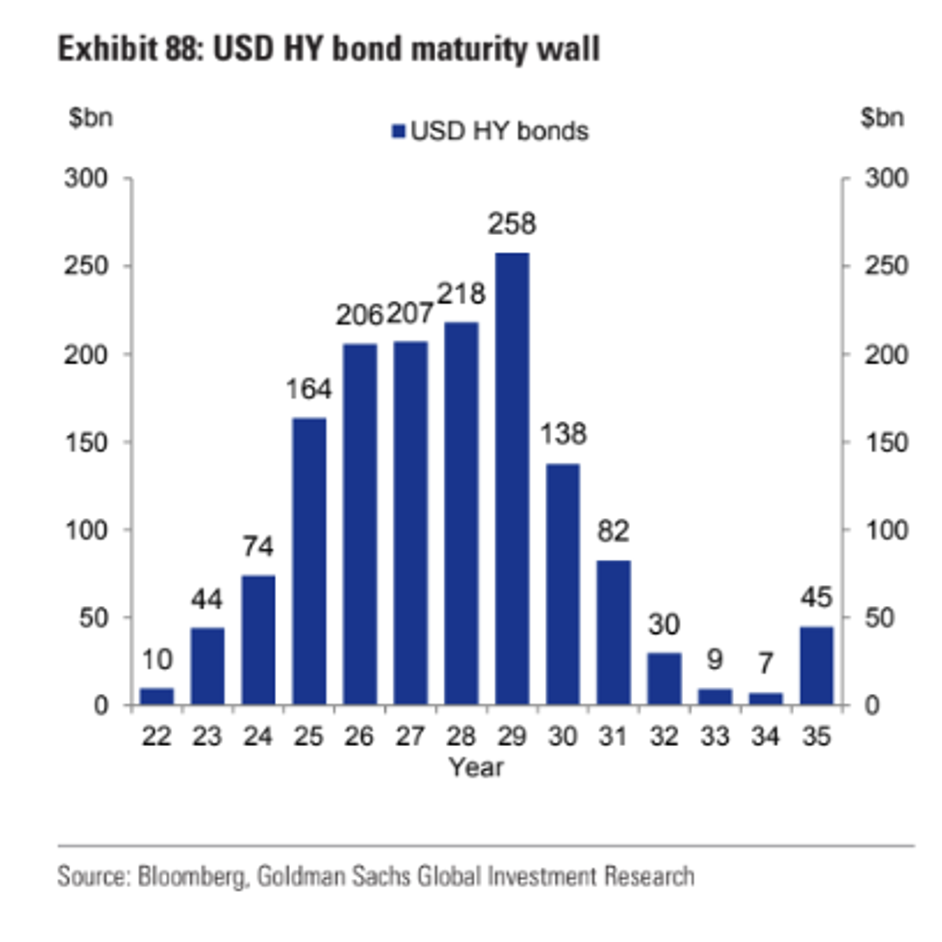
Source: Goldman Sachs Investment Research
While that is some reassuring news for the bulls, what’s still troublesome is the U.S. mortgage market situation. With home values continuing to rise—even in the face of two straight quarters of negative GDP growth—it remains costly for first-time homebuyers to borrow money for a house purchase. The upshot is that post-Fed, the average 30-year fixed rate mortgage dropped to its lowest level since April 13 at 5.13%, according to Mortgage News Daily.
Mortgage Rates Fall
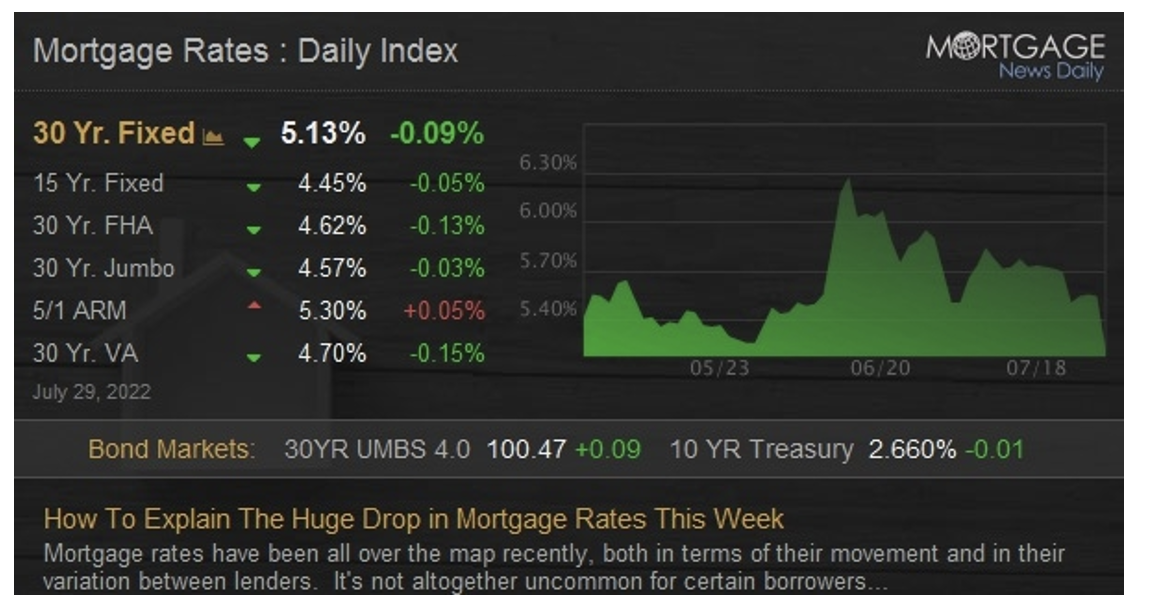
Source: Mortgage News Daily
Helping to ease the borrowing rate is also a drop in the ICE BofAML MOVE index, a measure of Treasury market volatility. If the 10-year yield steadies near 2.7% and the MOVE Index retreats under 100, we could see mortgage rates fall under 5% in short order.
Interest Rate Volatility Drops
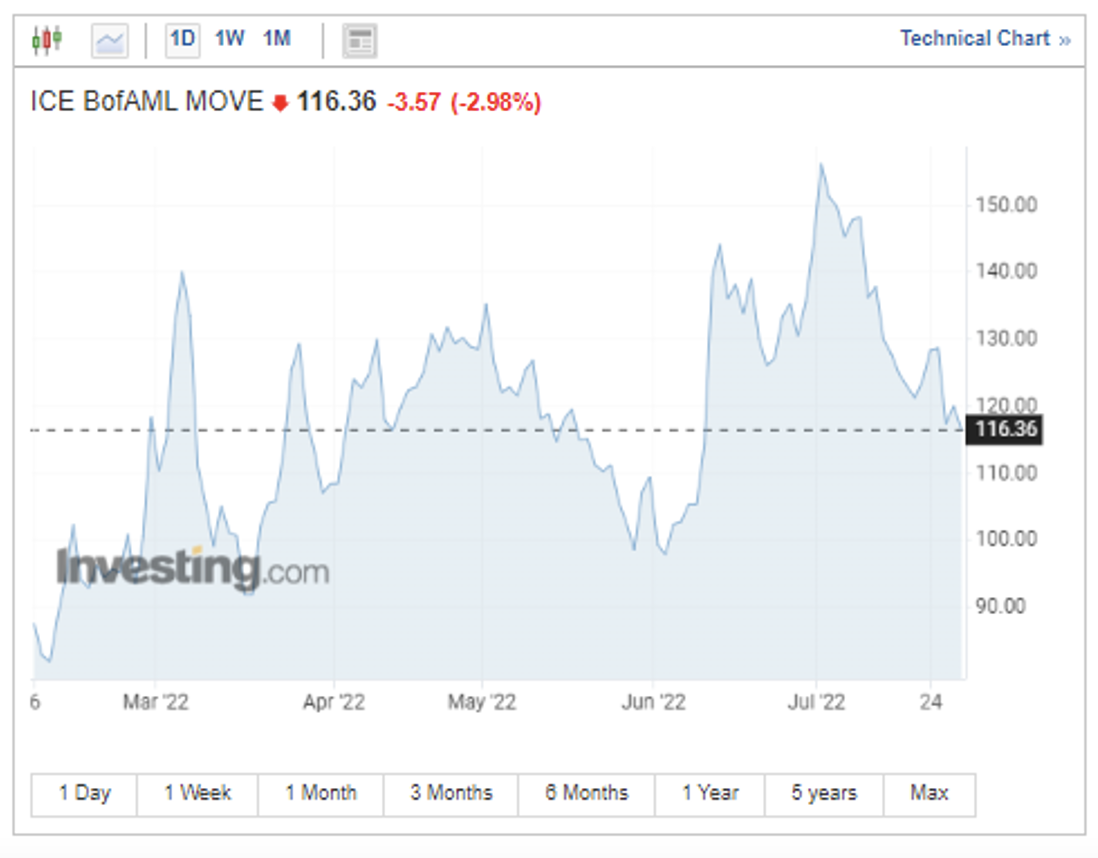
Source: Investing.com
Key Technical Pattern
Finally, this is a chart many of my fellow technicians are watching: A head-and-shoulders topping pattern triggered on the 10-year yield. With a top at 3.5% and a neckline of 2.7%, the target is 1.9%. That would be a massive drop from here and surely imply a rather sharp recession is in the cards. We’ll see if that plays out, but I will be watching the 2.7% mark in the days and weeks ahead.
10-Year Treasury Rate: Head And Shoulders
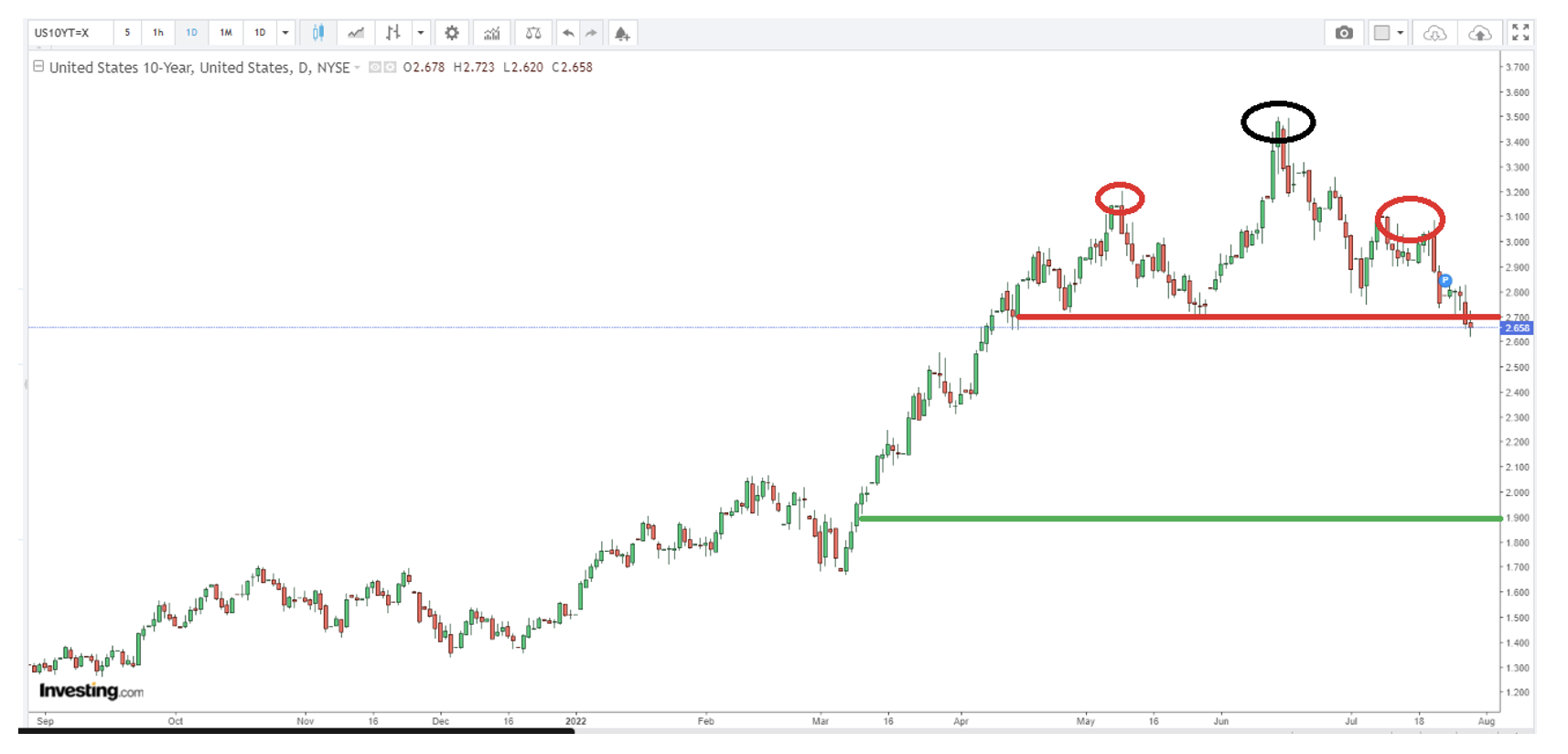
Source: Investing.com
The Bottom Line
The bond market, like stocks, reacted positively to the FOMC decision last Wednesday. Global stocks and bonds rose, yields fell and rate volatility eased. Still, much uncertainty lies ahead with the notoriously volatile months of August and September front and center.
Disclaimer: Mike Zaccardi does not own any positions in the securities mentioned above.
